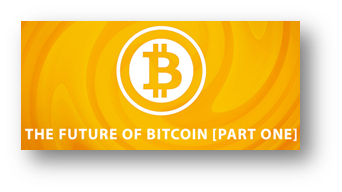Segregated Witness and August 1st
Things are really getting interesting for anyone who owns Bitcoins at the moment. Some of the biggest movements in Bitcoin’s technology and politics are all coming to a head in the next few weeks. Everyone is waiting for a very important date – August 1st, 2017. It’s been a day shrouded in mystery, as multiple deadlines are popping up for Bitcoin protocol upgrades.
If you keep your own coins, you might have some preparing to do before August 1st. But, if you have an account with an exchange like CEX.IO, you probably have everything taken care of for you. Let’s clear up some of the confusion of what’s going on and look at what you need to do with your Bitcoins.
Scaling – The Bitcoin Civil War
One of the biggest political and technical issues so far in the cryptocurrency world has been the Bitcoin scaling debate. As it stands now, the technology that underpins Bitcoin simply cannot support the increasing number of transactions happening on the network every day. There are ways to fix this, but coming to an agreement on which one is best is tough.
Segregated Witness is a clever proposal that will help Bitcoin deal with more transactions immediately and open the door to more elaborate upgrades in the future. It’s gained a lot of support from the Bitcoin community, but coming to a consensus on how it should be activated is difficult too.
There are multiple possible ways that Segregated Witness can be implemented on the Bitcoin blockchain. Because of this, there is some confusion about which ones might happen.
August 1st – User Activated Soft Fork (UASF)
The original proposal to implement Segregated Witness (SegWit) was called BIP 141, and was the only viable way for SegWit to be activated. The problem is that it requires a 95% majority of hash power to activate it. Getting a 95% majority on something as decisive as this issue is extremely difficult, and hasn’t looked likely until recently.
To overcome this, some clever workarounds have been developed. The first of which was BIP (Bitcoin Improvement Protocol) 148. BIP 148 made it easier for BIP 141 to activate by making it easier to achieve a 95% majority. However, in order to do so, it required a User Activated Soft Fork to happen on August 1st. This is a risky move and could result in a blockchain split – a bad result for everyone. That’s why August 1st is such a big deal.
BIP 91 – A Safer Solution
Many people weren’t happy with the risk of a blockchain split. So, developer James Hilliard came up with BIP 91 to offer an alternative that doesn’t require a soft fork. BIP 91 has gained huge support from the mining community, and it reached the 80% it required to be ‘locked in’ to the Bitcoin blockchain. This is a huge breakthrough in the Bitcoin scaling debate that has been going for years.
What BIP 91 essentially does, is force all miners to signal for the original BIP 141 proposal, ensuring that it gets the large 95% majority it needs.
So is Segregated Witness guaranteed, August 1st obsolete, and a blockchain split averted? Unfortunately, not quite. The User Activated Soft Fork is still possible, and there is also another possibility of a ‘hard fork’.
Fork in the Bitcoin Blockchain
Some Bitcoin miners still aren’t happy with Segregated Witness and the way it is being adopted. For this reason, some miners want to hard fork the bitcoin blockchain, essentially creating a new cryptocurrency called ‘Bitcoin Cash’ that will be more scalable than Bitcoin. This was originally just a contingency plan if the User Activated Soft Fork happened, but now it looks like ViaBTC wants to go through with it anyway. This decision has been condemned by many in the Bitcoin community, but there is a strong possibility it may still happen.
If this does happen, anyone that owned Bitcoins on the original Bitcoin Blockchain will now own Bitcoins on BOTH blockchains. If this sounds confusing, it’s because it is. You will now have to keep track of all your coins, wallets, and private keys on multiple blockchains.
What Do I Do If A Coin Split Occurs?
The good news is if you’re with CEX.IO, you don’t need to worry about any of the above scenarios. CEX.IO has been preparing for this for a long time and knows how to deal with all of the outcomes. Any new soft or hard forks on the Bitcoin blockchain will be supported. And, any new cryptocurrencies like Bitcoin Cash will be supported too.
In the case of a coin split, CEX.IO will also provide coin splitting services to users, meaning you don’t need to worry about any of the technical issues associated with it. You just get your new wallets and private keys when you need them. If you don’t know how to split coins or you would like coin splitting services, just put them in a CEX.IO account.
Also, keep in mind that the price of Bitcoin will likely fluctuate as all of this plays out. Uncertainty and new information on what’s happening will cause the price to rise and drop quickly. Also, if a fork occurs and new coins emerge, it will take some time for the market to decide how much they are really worth. As a result, there is a possibility that CEX.IO may need to pause trading for a short period during this time.
The Bottom Line
This is an interesting time for Bitcoin. If all goes well, we will soon have an upgraded Bitcoin protocol that allows faster transactions with lower fees. This is great news for most Bitcoin users. On the other hand, if a coin split occurs, things do get a bit messy. But, if you know how to prepare and protect your coins, you should be fine. If you aren’t sure, have professional like CEX.IO exchange take care of things for you.


